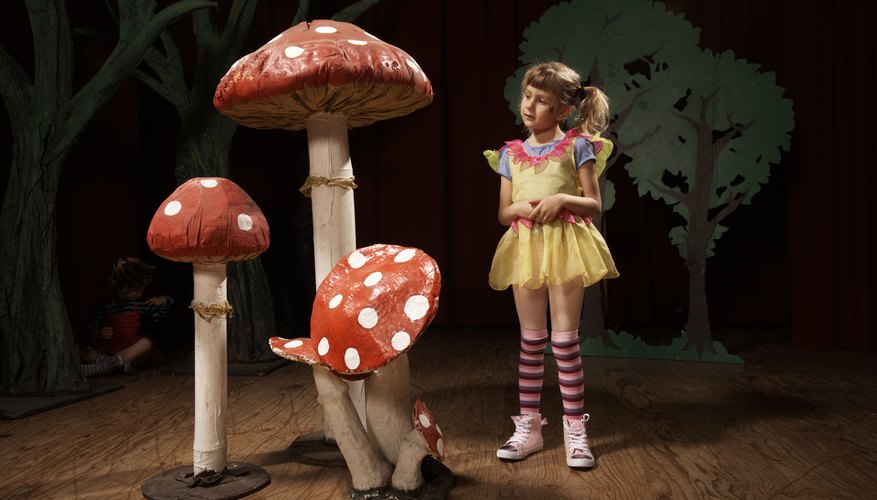Trees are a mainstay of drama productions, used usually to convey the audience to an imaginary exterior scene. Sometimes they are painted on backdrops and sometimes on pieces of set. According to theatre design professional Chris Kittrell, the best way to create a free-standing, non-weight-bearing stage tree is with a basic silhouette frame. You strengthen it with contour pieces, then cover and paint.
Design the tree on paper in silhouette form, including trunk, branches and canopy then draw the design onto a sheet of plywood with a felt pen. Scale up your paper drawing using the gridlines method, to make the transfer easier, if you wish. Note that 3.6 mm deep plywood, as used for fascias and soffits, is acceptable.
- Trees are a mainstay of drama productions, used usually to convey the audience to an imaginary exterior scene.
- Scale up your paper drawing using the gridlines method, to make the transfer easier, if you wish.
Cut out the tree with a jigsaw, including the gaps between branches and foliage. Cut out a roughly circular base piece from the remaining plywood. Nail structural support noggins cut from pine strips in place between the trunk and the base so the tree will stand up.
Cut out various roughly circular pieces from the remaining plywood with diameters equal to the width of the tree trunk and branches, at various points. Note these will be the contour pieces which will sit on the trunk and branches, perpendicular to them, to strengthen the structure.
- Cut out the tree with a jigsaw, including the gaps between branches and foliage.
- Cut out various roughly circular pieces from the remaining plywood with diameters equal to the width of the tree trunk and branches, at various points.
Make slot joints to attach the contour pieces to the trunk and branches. Mark each contour piece with a straight pencil line along its radius, as a guide line. Add two more pencil lines on either side of this line, parallel with it and 3.6 mm apart. Cut along these lines and chop out the cut section with a chisel, to create slots.
Make matching cuts across the radii of the tree trunk and branches at the points where you wish to fit the contour pieces. Chop out these sections too.
Slide the contour pieces into place across the trunk and branches of the tree, ensuring each one slots into the equivalent slot on the tree. Make structural support noggins, if required, to attach between the contour pieces and the tree, and glue them into place. Allow to dry.
- Make matching cuts across the radii of the tree trunk and branches at the points where you wish to fit the contour pieces.
- Slide the contour pieces into place across the trunk and branches of the tree, ensuring each one slots into the equivalent slot on the tree.
Wrap wire mesh panels around the trunk, shaping it as required. Nail the wire mesh in place with U-shaped nails. Cut the wire mesh panels as required to cover the branches, as they will be narrower.
Cover the wire mesh with muslin, pulling it taut to create a tight skin for painting on. Fix in place with PVA glue. Allow this to dry. Paint as required. Make other trees, as required, using the same method.
WARNING
Wear gloves when cutting and shaping wire mesh.
